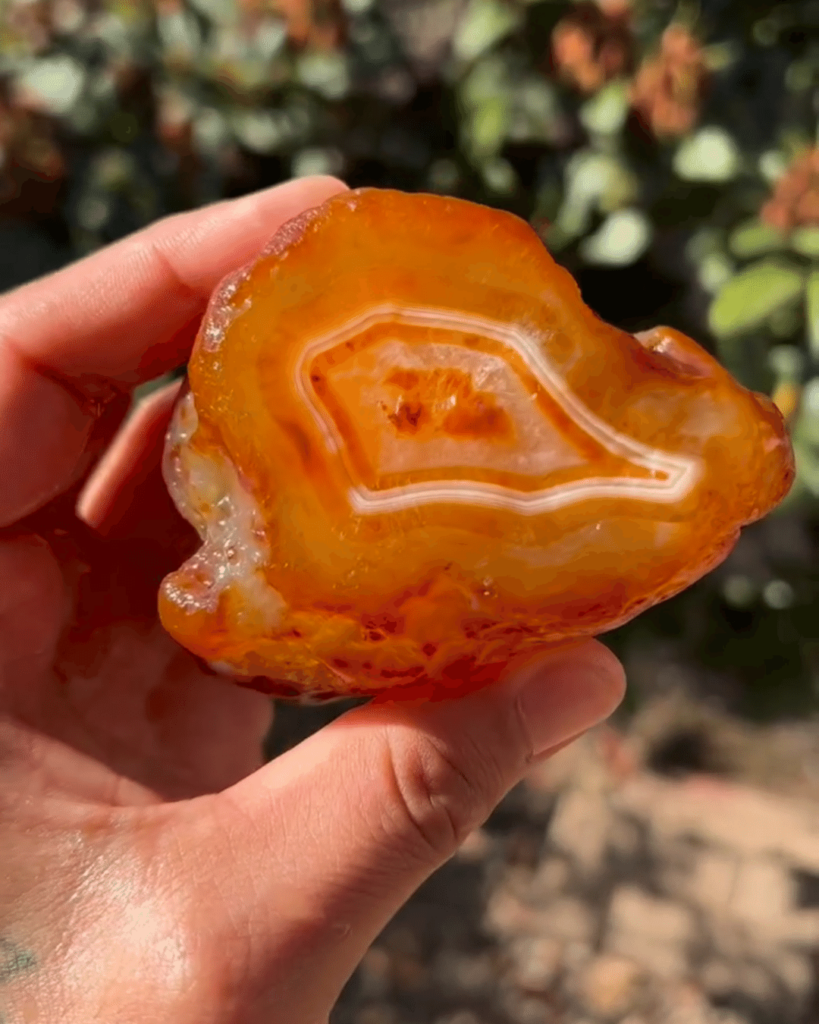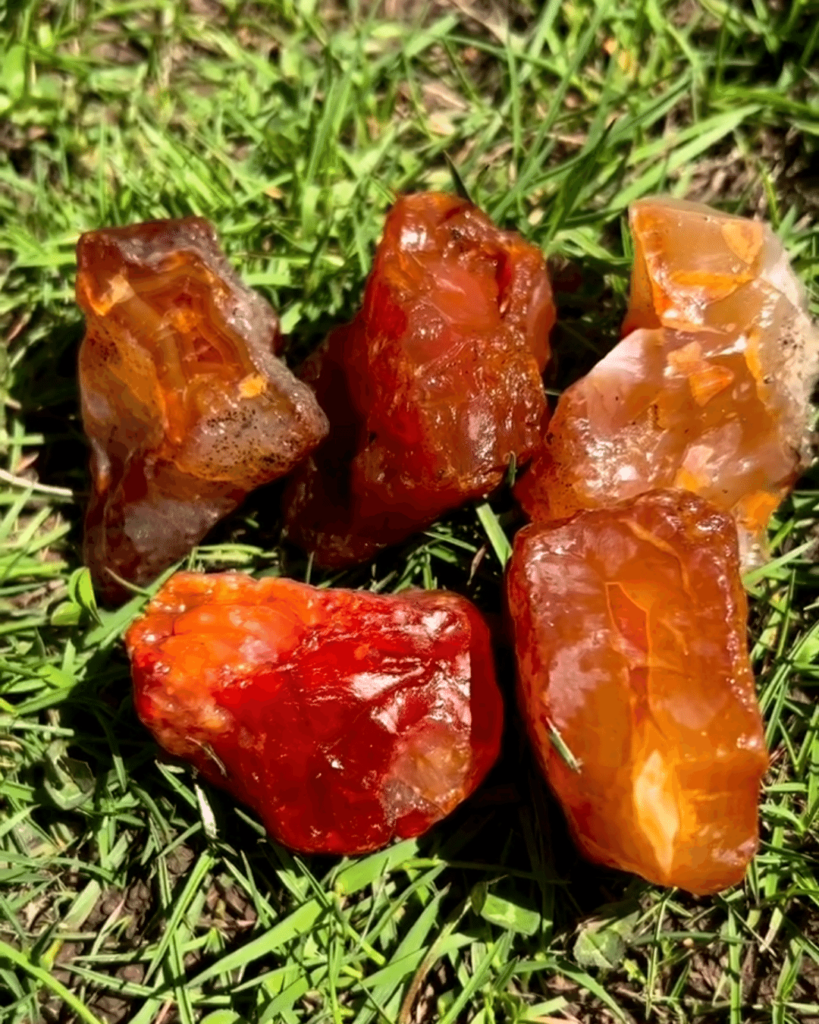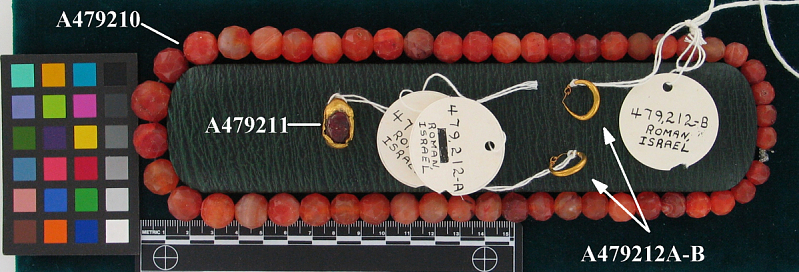Carnelian
Carnelian, a captivating variety of chalcedony, is known for its striking range of reddish hues. These tones can vary from a pale orange to an intense, almost-black red. Take a stroll along most any river in the Pacific Northwest and you’re sure to stumble across one or more of these beautiful stones.

As volcanic or intrusive igneous magma cools, gases expand, and as it is cooling, the rock begins to harden around those areas. Fractures follow the cooling and shrinking of the rock. Eventually, the gas escapes from within the lava or magma, leaving behind voids and fractures which are filled by siliceous fluids. Over time, the siliceous fluid slowly hardens at low temperature.
When these siliceous crystal masses and veins are solid, and if they contain sufficient trace hematite to be close to red, they result in a carnelian gemstone. The color of this semi-precious gemstone, which can range from yellow-orange to a vibrant red, is all dependent on the amount of iron oxide and other trace elements included in the original solutions.

Carnelian is one of the earliest known gemstones. It’s name derives from the Latin “carneus” which translates to “flesh-colored”. The importance of carnelian in history is well-recorded. Ancient Egyptians used the stone as a representation of the strength of Horus, the Sun God. They placed carnelian stones with their dead.
The use of carnelian can be found in the Bible, and was much prized as a gemstone in early Rome. This necklace, at the Smithsonian, is dated to the 1 – 4th Century, A.D.

Carnelian’s color can be enhanced by baking and dyeing with iron salts. Chief source localities are Ratnapura, India; Campo de Maia, Brazil; and Warwick, Queens, Australia.
In the north western United States, the extensive flood basalts have left ample opportunity to find prospective places to hunt for carnelian and agate. For example, the rockhunting guide “Gem Trails of Oregon” lists 8 known sites for carnelian and 53 sites known for agates.

